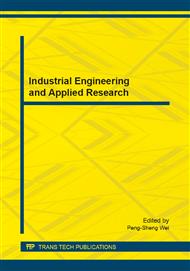p.148
p.154
p.158
p.162
p.166
p.173
p.179
p.183
p.187
Coanda Effect on the Impact of Distribution Characteristics of Oil-Air Annular Flow
Abstract:
The T-junction model is simulated in Fluent by changing the curvature of branch pipe, and then the distribution characteristics of the annular flow was studied in T-junction distributor. The mass flow and pressure of the annular flow in this T-junction are studied, and the impact of Coanda Effect on the annular flow distribution characteristic is analyzed in oil-air two phases flow. The results show that, Coanda Effect affects the distribution of oil-air annular flow unevenly. The mass flow rate of air phase and the air velocity of outlet increase with decreasing the curvature, while the mass flow rate of liquid decrease with decreasing the curvature of the branch pipe connection; T-shaped junction inlet pressure is high, but the pressure gradient is small, the pressure gradient in the small curvature manifold is larger than that in the large curvature manifold.
Info:
Periodical:
Pages:
166-170
Citation:
Online since:
August 2014
Authors:
Keywords:
Price:
Сopyright:
© 2014 Trans Tech Publications Ltd. All Rights Reserved
Share:
Citation:


